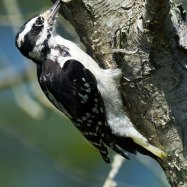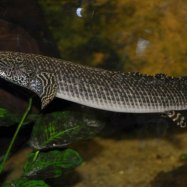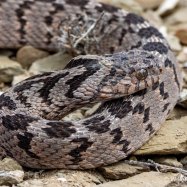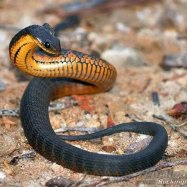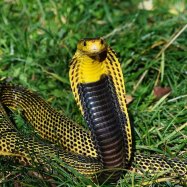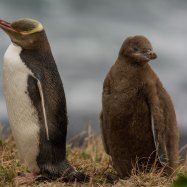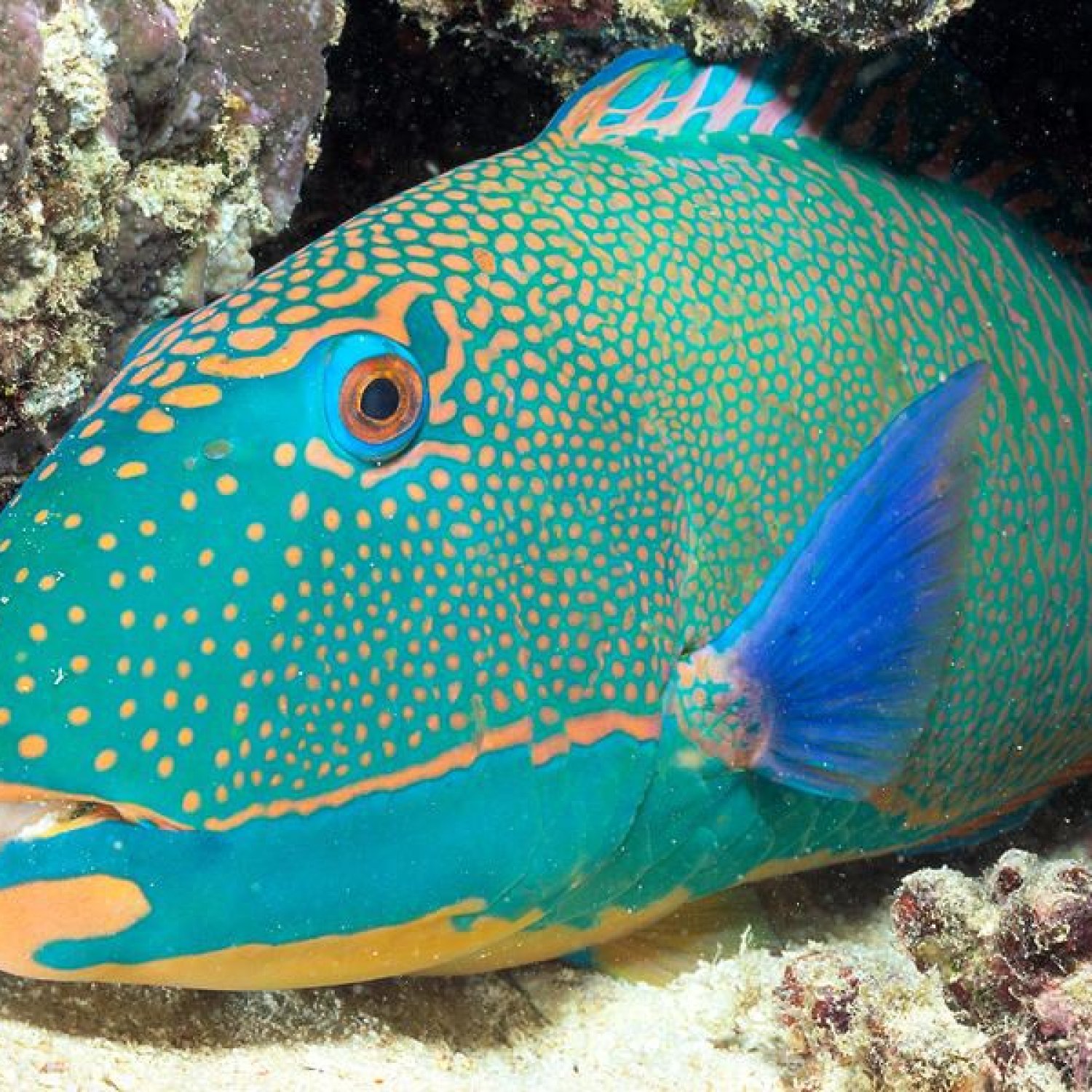
Parrotfish
20 to 120 cm
Parrotfish are colorful creatures found in coastal regions around the world. Ranging from 20 to 120 cm in length, these oval and elongated fish belong to the family Scaridae. Known for their vibrant hues and unique beak-like teeth, parrotfish play an important role in maintaining the health of coral reefs. As they graze on algae, they prevent it from overtaking the reef, ensuring a diverse and thriving underwater ecosystem. Next time you're snorkeling, keep an eye out for these quirky and vital creatures.
Animal Details Summary:
Common Name: Parrotfish
Kingdom: Animalia
Habitat: Coral reefs, seagrass beds, rocky coastlines
The Fascinating World of Parrotfish: A Colorful and Unique Species
When you think of a fish, the first thing that might come to mind is a drab, slimy creature swimming in the depths of the sea. But not all fish fit this stereotype. The parrotfish, also known as Scaridae, is a species of fish that is anything but dull. With its colorful appearance and intriguing feeding habits, the parrotfish is a remarkable creature that has captured the attention of many marine biologists and nature enthusiasts Parrotfish.A Brief Introduction to the Parrotfish
The parrotfish belongs to the kingdom Animalia and the phylum Chordata, within the class Actinopterygii and order Perciformes. Its scientific name, Scaridae, comes from the Greek word "skaros," which means "rubble" or "fragment." This is a reference to the fact that parrotfish produce fine sand particles as they nibble on coral reefs, seagrass beds, and rocky coastlines.
There are around 80 different species of parrotfish found around the world, all of which belong to the family Scaridae. They are generally found in tropical and subtropical regions of the Atlantic, Indian, and Pacific Oceans. They are not native to any particular country, as they can be found globally, but are most commonly found in coastal regions.
The Vibrant Colors of Parrotfish
The first thing that catches the eye of anyone who comes across a parrotfish is its vibrant, almost neon-like colors. These colors vary depending on the species and can include shades of blue, green, red, orange, and purple. The colors are so bright and vivid that they almost look artificial Pea Puffer.
Unlike many other species of fish, parrotfish do not have scales. Instead, they are covered with a thick mucus layer that acts as a protective coating. This mucus layer is what gives the parrotfish its brilliant colors, which they display proudly as they swim around the colorful coral reefs.
The coloration of male and female parrotfish can also differ. In some species, males have brighter and more elaborate colors, while others have no distinguishable differences between the two. The coloration of parrotfish also changes as they age, with some species starting off with dull colors and gradually becoming more vibrant as they mature.
The Unique Feeding Habits of Parrotfish
One of the most fascinating things about parrotfish is their feeding method. While most fish are either predators or scavengers, parrotfish are herbivores. This means that they primarily feed on plants and algae found on coral reefs, seagrass beds, and rocks.
To do this, they use their beak-like mouth to scrape off algae and other plant life from these surfaces. But here's where it gets even more intriguing. As the parrotfish munches away on the coral, they also ingest small bits of coral along with it. This coral is then ground up by their powerful jaws, and the indigestible parts are expelled as fine sand particles.
It is estimated that a single parrotfish can produce up to 320 kilograms of sand per year. This process plays a vital role in maintaining the health of coral reefs by keeping them clean and free of excess algae growth. In some cases, parrotfish have even been observed to use their beaks to break off chunks of coral for easier feeding.
Parrotfish and the Coral Reef Ecosystem
Coral reefs are often referred to as the "rainforests of the sea" due to the incredible diversity of species that call it home. Parrotfish are a crucial species in this ecosystem, as they play a significant role in maintaining the balance within it.
Their feeding method helps keep the coral reefs clean, which in turn promotes their growth and creates habitats for other marine creatures. In addition, parrotfish also play a vital role in the ocean's carbon cycle. The sand they produce as a byproduct of their feeding contributes to the creation of new beaches and islands, helping to prevent erosion and maintain the coastline.
Unfortunately, parrotfish are also facing threats from human activities that impact the coral reefs. Overfishing and the destruction of coral reefs through pollution and climate change are some of the main threats to their survival. This not only affects the parrotfish but also has detrimental effects on the entire coral reef ecosystem.
Physical Characteristics of Parrotfish
Apart from their magnificent colors and unique feeding habits, parrotfish also have distinct physical characteristics that set them apart from other fish species. They have an oval and elongated body shape, with a large and prominent head. This head is what houses their strong beak-like mouth, which is essential for their feeding method.
Parrotfish also have sharp teeth fused together to form a beak, which they use to scrape algae and coral off surfaces. These teeth are continuously growing and are self-sharpening, ensuring they always have the right tools for their feeding needs.
The size of parrotfish varies greatly depending on the species, with some growing to be as short as 20 cm and others reaching lengths of up to 120 cm. They also have other distinguishing features, including large, protruding eyes and a single dorsal fin on their back.
The Colorful Mating Behavior of Parrotfish
Aside from their feeding habits, the mating behavior of parrotfish is another fascinating aspect of this species. During the mating season, male parrotfish often display vibrant colors and patterns to attract females. In some species, they also build nests out of coral rubble, which they use to attract a mate.
Once a mating pair is formed, they will swim side by side, with the male leading the way to protect the female from other potential mates. Parrotfish can change their colors and patterns to indicate their reproductive status, with brighter colors signaling a readiness to mate.
During breeding, the female will lay eggs, and the male will fertilize them before carrying them in his mouth until they hatch. This behavior is common in many species of fish, as it protects the eggs from predators and ensures the survival of the offspring.
Fascinating Facts About Parrotfish
- Parrotfish are one of the few species of fish that can produce 50 different colors.
- Some species of parrotfish can be seen changing their appearance from male to female or vice versa, depending on their environment.
- Parrotfish have teeth that are 1,000 times harder than human teeth.
- These fish are known to communicate with each other through different grunts, squeaks, and chirps.
- The largest species of parrotfish, the bumphead parrotfish, can grow up to 4 feet in length and weigh up to 150 pounds.
The Importance of Protecting Parrotfish
As we continue to learn more about the importance of parrotfish and their role in the marine ecosystem, it becomes evident that preserving them is crucial. The decline of parrotfish populations can have serious consequences on coral reefs and other marine life.
One way we can protect parrotfish is by reducing our impact on coral reefs. This can be achieved through sustainable fishing practices and reducing pollution and other human activities that harm the reefs.
Educating others about the importance of parrotfish and their role in marine ecosystems is also essential in promoting their conservation. By understanding the value of these colorful creatures, we can appreciate and work towards preserving them for generations to come.
In Conclusion
The parrotfish is a truly fascinating species, with its vibrant colors, unique feeding habits, and vital role in the coral reef ecosystem. As we continue to learn more about this remarkable fish, it becomes clear that it is much more than just a colorful and unusual-looking fish. It is a vital part of our oceans, and it is our responsibility to ensure its continued presence in our beautiful and diverse marine world.

Parrotfish
Animal Details Parrotfish - Scientific Name: Scaridae
- Category: Animals P
- Scientific Name: Scaridae
- Common Name: Parrotfish
- Kingdom: Animalia
- Phylum: Chordata
- Class: Actinopterygii
- Order: Perciformes
- Family: Scaridae
- Habitat: Coral reefs, seagrass beds, rocky coastlines
- Feeding Method: Herbivore
- Geographical Distribution: Tropical and subtropical regions of the Atlantic, Indian, and Pacific Oceans
- Country of Origin: Global
- Location: Coastal regions
- Animal Coloration: Colorful, vibrant
- Body Shape: Oval and elongated
- Length: 20 to 120 cm
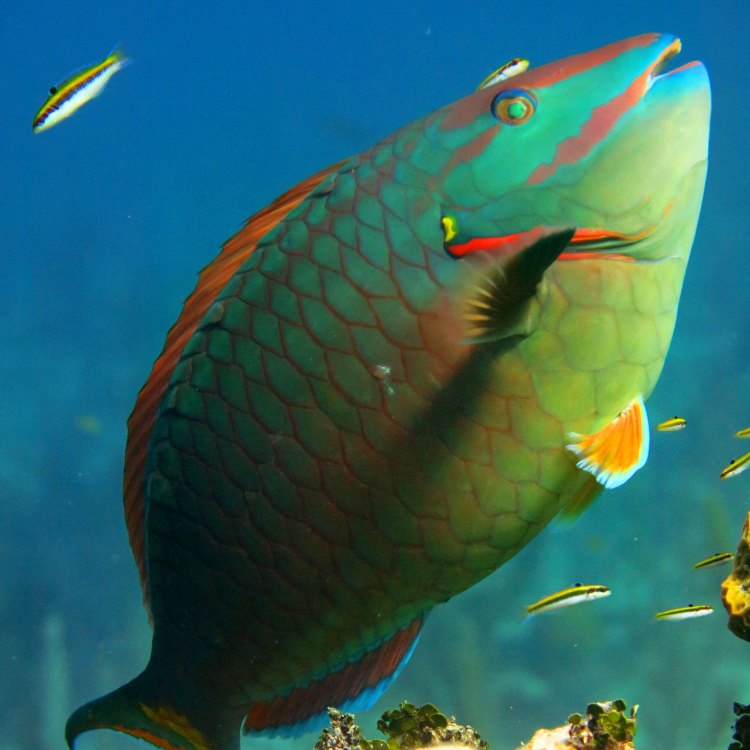
Parrotfish
- Adult Size: Varies depending on species
- Average Lifespan: 5 to 20 years
- Reproduction: Sexual
- Reproductive Behavior: Some species have harems, others change sex
- Sound or Call: Some species produce grunting or grinding sounds
- Migration Pattern: Variable, depending on species
- Social Groups: Some species form schools
- Behavior: Active during the day, feed and rest at night
- Threats: Overfishing, habitat destruction, coral bleaching
- Conservation Status: Varies depending on species
- Impact on Ecosystem: Important for maintaining coral reef health
- Human Use: Fishing, aquarium trade
- Distinctive Features: Beak-like mouth, colorful scales, fused teeth
- Interesting Facts: Can change coloration and sex, produce sand
- Predator: Sharks, barracudas, larger fish
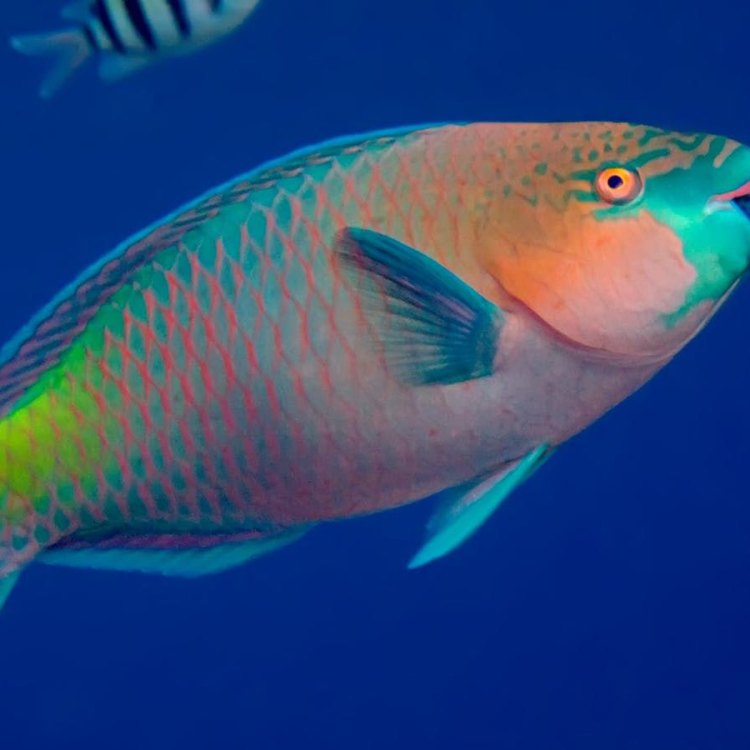
Scaridae
The Fascinating World of Parrotfish: Guardians of the Coral Reefs
The ocean is home to countless intriguing creatures, each with unique characteristics and behaviors. Among these creatures is the parrotfish, a colorful and charismatic fish that plays a vital role in maintaining the health of coral reefs.With their vibrant colors and beak-like mouths, parrotfish may seem like something out of a tropical dream. However, there is much more to these fish than meets the eye PeaceOfAnimals.Com. In this article, we will dive into the world of parrotfish, exploring their physical attributes, behaviors, and impact on the ecosystem.
A Colorful and Diverse Species
Parrotfish are found in tropical and subtropical waters around the world, with the largest diversity occurring in the Indo-Pacific region. There are over 80 known species of parrotfish, each with its own unique characteristics and behaviors.One of the most distinctive features of parrotfish is their vibrant coloration. They come in a variety of bright colors, including shades of blue, green, red, and yellow. Their scales may also feature intricate patterns and markings, making them a sight to behold underwater.
Another unique physical attribute of parrotfish is their beak-like mouth. This unique mouth structure is formed by fused teeth, giving it a beak-like appearance. This adaptation allows parrotfish to scrape algae and coral from rocks and dead corals, making them important contributors to the reef's ecosystem Peruvian Guinea Pig.
A Life of Transformation
Parrotfish have a fascinating life cycle that involves periods of transformation. They start their lives as larvae, drifting in the open ocean until they settle on a coral reef. Once they find a suitable home, they begin their transformation into juvenile parrotfish.As they grow, parrotfish undergo a process known as sex change, where they change from female to male. This process can occur multiple times throughout their lifespan, and it is influenced by various factors such as size, social environment, and reproductive success.
Moreover, some parrotfish species have a unique and interesting reproductive behavior. Some species form harems, where one male will mate with multiple females. In contrast, others change sex periodically, often in response to an imbalance in the harem.
A Busy Day for Parrotfish
Parrotfish are active during the day, spending their time foraging for food and resting at night. They are herbivores, and their diet primarily consists of algae and coral. With their powerful beaks, they can break apart and ingest much larger pieces of coral than their body size, making them important for maintaining the health of the reef.Interestingly, parrotfish also play a crucial role in sand production. As they scrape algae and coral from the reef, they ingest small bits of calcium carbonate, a component found in corals. This gets digested, and the rest is excreted as sand, making parrotfish major contributors to the white sandy beaches we all love.
Threats to Parrotfish and Coral Reefs
Unfortunately, parrotfish and coral reefs face numerous threats, primarily caused by human activities. Overfishing is a significant issue as parrotfish are targeted for food and the aquarium trade. This has resulted in a decline in their population, affecting their role in maintaining the health of the reef.Habitat destruction is another significant threat to parrotfish and coral reefs. Pollution, dredging, and coastal development have all contributed to the destruction of coral reefs, disrupting the ecosystem and putting parrotfish at risk.
Moreover, climate change has had a devastating impact on coral reefs, causing coral bleaching. This occurs when the ocean temperatures rise, causing stress to the corals and causing them to expel their colorful algae, leaving behind a white, bleached appearance. This reduces the health of the reef, making it challenging for parrotfish to find food and shelter.
Conservation Efforts and the Importance of Parrotfish
The conservation status of parrotfish varies depending on the species. Some are listed as vulnerable or endangered, while others are still abundant. However, it is crucial to protect all species of parrotfish to maintain the balance of the reef's ecosystem.One of the most critical roles of parrotfish is maintaining the health of coral reefs. By consuming algae, they prevent overgrowth, which can smother and kill corals. With their specialized beak-like mouths, they also help to break up and remove dead corals, allowing new ones to grow in their place.
Without parrotfish, coral reefs would not only lose their vibrant colors and beauty, but they would also become less diverse and healthy. This, in turn, would have a significant impact on other marine species that rely on coral reefs for food and shelter.
Human Use: Fishing and the Aquarium Trade
Parrotfish have been used for food by various cultures for centuries. However, with the increase in demand, the population of parrotfish has declined, making them vulnerable to overfishing. This is especially harmful to the ecosystem, as it disrupts their behavior and reproduction patterns, leading to further decline.Moreover, the aquarium trade is also a significant threat to parrotfish. While they may seem like an ideal addition to any tropical fish tank, they require specialized care, and their specific diet of algae and coral can be a challenge for aquarium owners to replicate. This has led to the death of many parrotfish in captivity, making it a cruel and unsustainable practice.
Around the World with Parrotfish
The migration pattern of parrotfish varies depending on the species. Some species are known to travel long distances, while others prefer to stay close to their home reef. Their migration behavior is still not well understood, but it is believed to be influenced by factors such as food availability, water temperature, and breeding cycles.Some species of parrotfish form schools, which are groups of fish that swim together in a coordinated way. This is common in juvenile parrotfish, and it offers them protection from predators, making them less vulnerable to attacks.
Wonderful Wonders of the Parrotfish
Apart from being important for the health of coral reefs, parrotfish have many other interesting facts that make them stand out among other fish. Firstly, as we mentioned earlier, they have the ability to change colors and sex, making their life cycle and behavior truly fascinating.Secondly, parrotfish have been known to produce grunting or grinding sounds, believed to be a form of communication between individuals. These sounds are usually heard during feeding or when males are courting females.
Lastly, parrotfish are important predators themselves, preying on smaller organisms such as worms, crustaceans, and tiny fish. They also play a role in keeping algae and coral populations in check, making them essential for maintaining a diverse and healthy ecosystem.
The Circle of Life
Like any other species in the ocean, parrotfish are also prey to larger predators such as sharks, barracudas, and other large fish. As with most marine creatures, their main defense mechanism is camouflage and their ability to swim quickly.However, with their population declining due to human activities, they are becoming more vulnerable to predators, causing a ripple effect on the marine ecosystem.
Finding a Balance for a Brighter Future
The decline of parrotfish and the health of coral reefs is a pressing issue that needs urgent attention. We, as humans, have a responsibility to care for and protect our oceans and the creatures living in them.It is vital to reduce overfishing, protect coral reefs, and reduce habitat destruction through sustainable practices and responsible tourism. As individuals, we can also make a positive impact by supporting organizations that focus on the conservation of parrotfish and coral reefs.
In conclusion, parrotfish may seem like just another colorful fish in the ocean, but they play a critical role in maintaining the health and diversity of coral reefs. It is crucial that we take action now to protect these fascinating creatures, so future generations can also enjoy their beauty and contribution to the marine ecosystem.
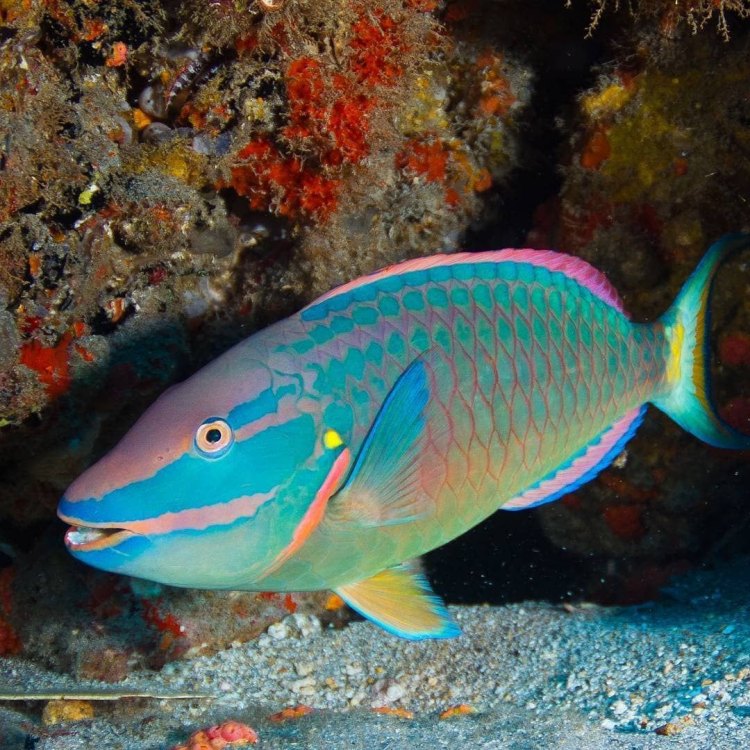
The Fascinating World of Parrotfish: A Colorful and Unique Species
Disclaimer: The content provided is for informational purposes only. We cannot guarantee the accuracy of the information on this page 100%. All information provided here may change without prior notice.

